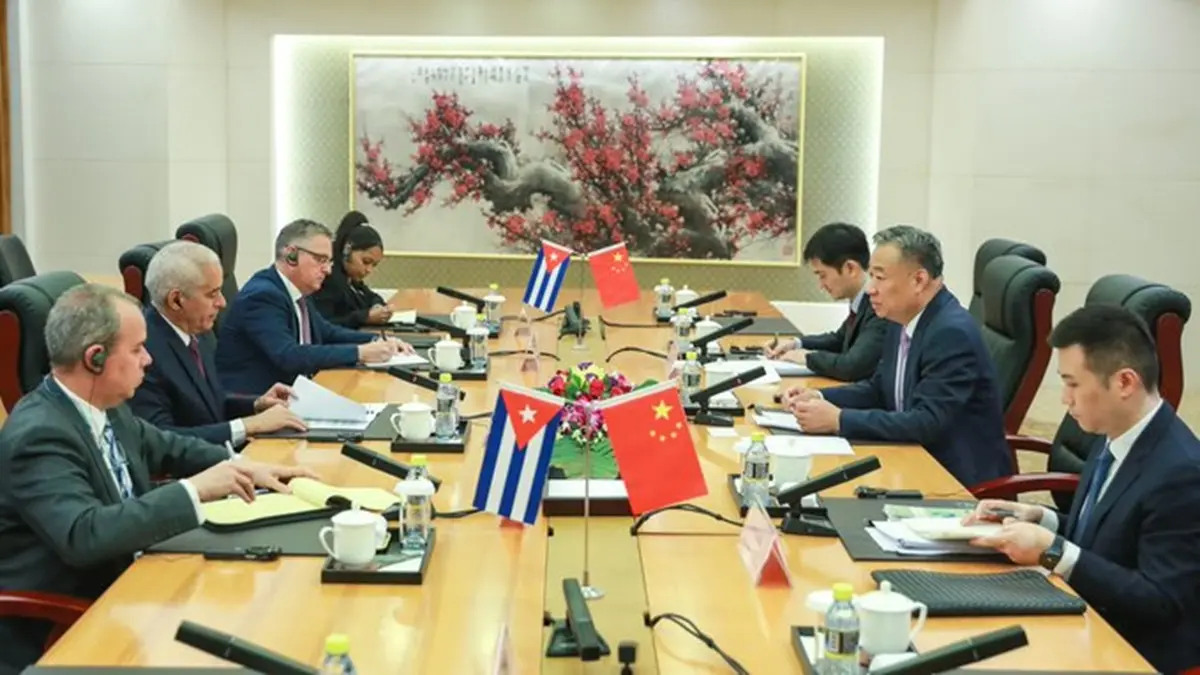Nicaragua and China Break Ground on Landmark Solar Project to Power Water Access and Energy Sovereignty
Nicaragua, with Chinese financing, launches its largest solar plant to date—powering water systems, cutting energy costs, and deepening South-South cooperation on infrastructure for social good.

It will be the country’s largest green power plant, powering the national water infrastructure and supporting the transition to renewable energy. Photo: @dw_espanol
June 8, 2025 Hour: 1:29 am
Nicaragua has inaugurated construction on a major solar power plant in partnership with China, marking a strategic leap toward energy independence, climate resilience, and universal access to clean water. Funded by an $83 million investment from Beijing, the Enesolar-3 photovoltaic facility in Nindirí, Masaya, is set to supply renewable energy to the country’s water utility, ENACAL, directly benefiting nearly 4 million people across urban and rural communities.
RELATED:
Nicaragua and Honduras Congratulate South Korea’s New President Lee Jae-Myung
Led by the China Communications Construction Company (CCCC), the plant will have an installed capacity of 70 megawatts and is expected to generate 140,000 megawatt-hours annually—enough to cover around 40% of ENACAL’s electricity consumption. Officials say this will substantially reduce operational costs, improving the delivery of water and sanitation services throughout the country.
Framed as more than just an infrastructure project, Enesolar-3 is part of a broader initiative by the Sandinista government to expand renewable energy, reduce fossil fuel dependency, and ensure access to public utilities as a basic human right.
“This is our Sandinista Popular Revolution delivering works of progress, development, dignity, and peace for the Nicaraguan people—together with our brothers from the People’s Republic of China,” said Laureano Ortega Murillo, presidential advisor for investment and international cooperation, during the cornerstone ceremony.
Ortega underscored the political and ideological depth of the alliance, highlighting that diplomatic relations between Managua and Beijing were restored just over three years ago. Since then, both countries have developed what Ortega described as an “intense” and “extraordinarily fast-paced” collaboration across key sectors, driven by mutual political commitment and South-South solidarity.
“These are swift approvals, expedited by a shared will to support each other—politically, technically, and as true partners,” he added.
Joining the ceremony were Chinese Ambassador Chen Xi and Gan Xingqiu, president of the CCCC Energy Institute, who announced that the plant would feature the most advanced solar technology developed in China and connect to the national grid via a newly built 230-kilovolt substation. “This will be Nicaragua’s largest green solar power plant,” Gan said.
ENACAL president Erving Barreda emphasized that electricity represents the company’s single largest operating cost. He described the project as “a game-changer” in improving service delivery and advancing public access to water.
The Masaya facility is part of a national network of three solar power plants, with additional construction underway in León and Matagalpa. The projects form a cornerstone of what the government has called an “energy offensive for human development,” aiming to lift people out of poverty through sustainable infrastructure.
Residents of Nindirí, who have long struggled with intermittent access to basic services, expressed hope and gratitude. “I lived through the 1990s, when water pumps didn’t work and we had to hire carts and trucks just to bring water home. This is a dream come true,” said Coralia José Pavón, a local resident.
Energy and Mines Minister Salvador Mansell noted that the project reflects the government’s continued commitment to prioritizing people’s needs over market-driven models. Ambassador Chen Xi reaffirmed China’s support for Nicaragua’s development and praised the South-South partnership as one rooted in equality, sovereignty, and mutual respect.
As countries of the Global South seek alternatives to extractive development models, Nicaragua’s renewable energy drive stands as a bold example—where public ownership, international cooperation, and climate action converge in pursuit of human dignity and social justice.
Author: MK
Source: Sputnik, TeleSUR






